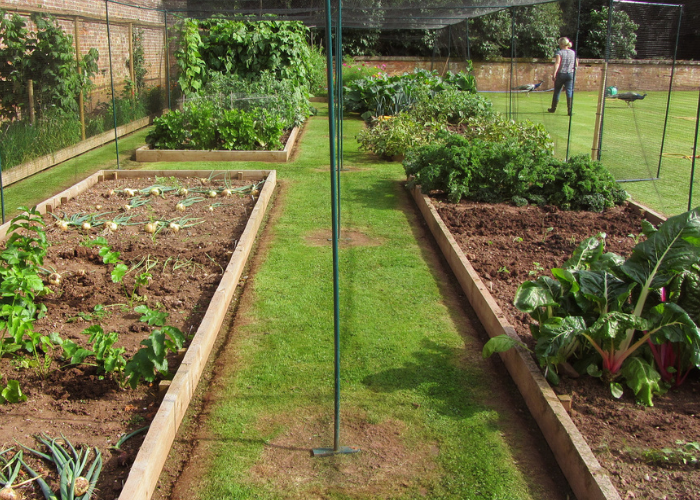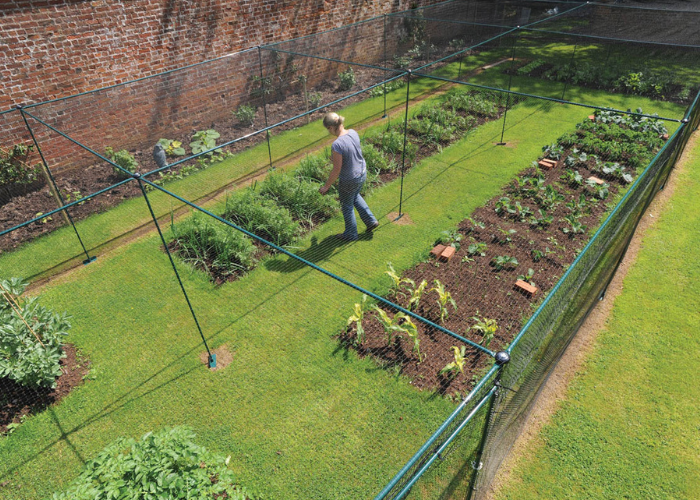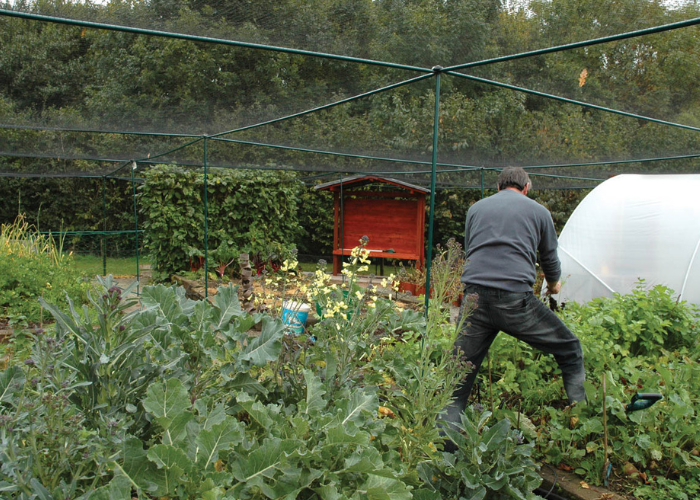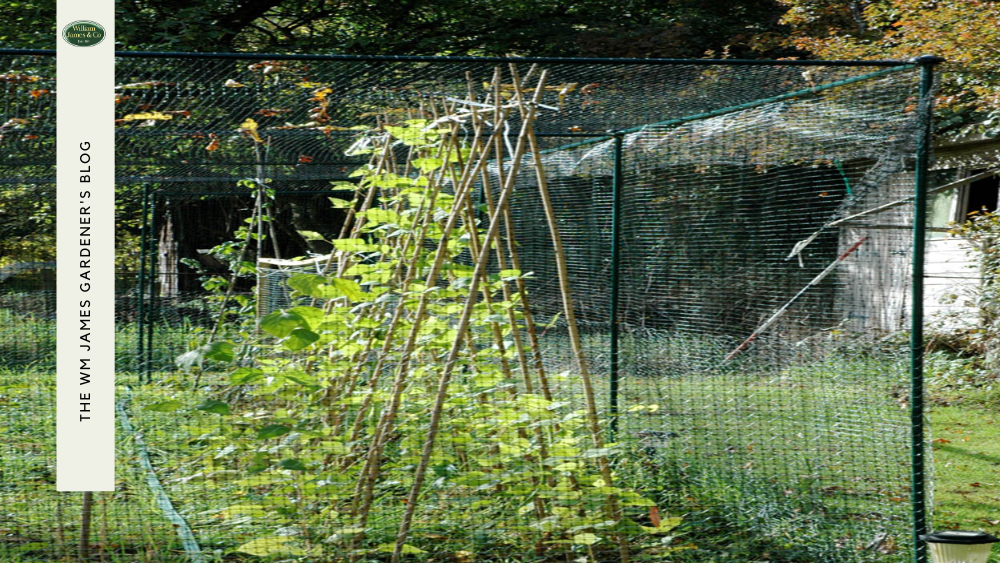We use cookies to make your experience better. To comply with the new e-Privacy directive, we need to ask for your consent to set the cookies. Learn more.
The Ultimate Guide to Growing Root Vegetables: Tips & Tricks for a Successful Harvest
- Admin
- WM James Gardening Blog
- 24 Dec 2024
-
115views

If you're new to gardening or haven't yet dipped your toes into the world of root veggie growing, stop here. Let us convince you that growing root vegetables is a great way to improve your gardening skills and get familiar with the processes.
WM James will give you information, advice, and tips on growing root veggies in your garden, allotment, or containers so you can reap the rewards of a successful harvest!
If you need any tools or equipment ready for your new gardening venture, shop our products below! You can even get free and fast delivery*.
In This Guide:
The Easiest Root Vegetables to Grow for Beginners
Tips & Tricks for Growing Root Veggies At Home
Growing Root Vegetables in Containers
How Deep Do Vegetable Roots Grow?
What is a Root Vegetable?
A root vegetable is a type of plant where the edible part grows underground. These vegetables store nutrients in their roots to support the plant's growth.
That's why they're so rich in vitamins, minerals, and energy, making them fantastic for our diets – their earthy flavour makes them recognisable in a lot of hearty meals!
Root veggies are very common, and some include carrots, parsnips, beets, potatoes, and onions.
They also have an unusually long shelf life, so they're great to keep in the house as and when you need them!
The Easiest Root Vegetables to Grow for Beginners
Below are five beginner-friendly vegetables, which are great root veggies to start with if you've recently got the itch for gardening.
| Vegetable | Why They’re Easy | When to Sow | When to Harvest |
| Radish |
|
March-September | 3-4 weeks after sowing |
| Carrot |
|
March-June | 10-16 weeks after sowing |
| Beet |
|
March-July | 7-12 weeks after sowing |
| Onions from sets |
|
March-April | 10-12 weeks after sowing |
| Parsnips |
|
March-May | After the first frost |
The Essential Veg Calendar for UK Gardeners
Tips & Tricks for Growing Root Veggies At Home
So, you now know what veggies to take a stab at, but how do you grow your own root vegetables for a successful and bountiful harvest?
Don't worry; we'll share the secrets of rewarding root vegetable growth. With our handy tips, growing root vegetables in your garden will be a breeze.
A Guide to Eating With the Seasons
Soil Conditions
Soil prep is one of the most important components of growing root vegetables, so you need to take all the necessary steps to ensure your soil is up to scratch.
Here are some things we suggest to do before you begin sowing:
- Break up the soil with the Burgon & Ball Stainless Steel Digging Fork to loosen the compact soil and remove any stones, clumps, and debris to prevent wonky roots. This digging fork has outstanding strength for even the toughest of soil.
- Mix in compost or well-rotted manure to your soil to provide micronutrients for plant growth.
- Root vegetables prefer slightly acidic soil with a pH of 6-7. If necessary, test your soil with a pH tester.
Sowing
Sowing your seeds is another important process, and getting it right will give your plants a much better chance of germinating.
Here are some of our recommendations:
- You should sow at the correct time by checking the table of vegetables above, or your plants will result in poor germination. You should also avoid sowing seeds in frozen/waterlogged soil.
- Most root vegetables don't like being transplanted, so it's best to plant them directly where you intend them to grow.
- Depth and spacing are important when planting seeds so they don't become overcrowded. We recommend the Burgon & Ball Dibber to help you carve out the area for the seeds and the Dibblet to help you space seeds accurately.
If plants become too overcrowded, they will 'fight' for moisture, nutrients, and sunlight and become more susceptible to disease, so this is a really important step.
Companion Planting
If you've never heard of companion planting, it could be an excellent process to implement in your gardening.
It involves planting different vegetables together to help reduce pests, make the most of your soil, boost crop yields, create a balanced ecosystem in your garden, and even improve the taste of your veggies. This list goes on.
Here are some top tips for companion planting your root vegetables:
- Group plants with similar light, water, and soil requirements for the best results.
- Pairing deep-rooted vegetables with shallow-rooted vegetables will maximise the use of your soil.
- Incorporate pest-repellent herbs like rosemary, basil, and mint with your root vegetables.
- Carry out crop rotation annually.
If you're having trouble with pests, remember to consider garden netting! Ours is heavy-duty, reliable, and can protect against various garden pests.
Watering
Keeping your plants watered will ultimately keep them healthy. It's basically the first rule of gardening. It's also no different for root vegetables.
Here are some tips on keeping your root veggies quenched:
- Keep the soil evenly moist but not water-logged, which can cause rot.
- Water in the morning or in the evening. If you do it midday, the sun may evaporate the water.
- You could add a layer of mulch to retain moisture.
Sunlight
Different plants often have different sunlight requirements. Fussy things. But it's still a really important part of gardening that needs to be observed.
As it varies from vegetable to vegetable, here are some things to bear in mind:
- Most root vegetables, such as radishes and beets, need full sunlight (6-8 hours of direct sunlight per day).
- Some root vegetables, such as parsnips and onions, can handle a bit of shade. Not being in direct sunlight during the warmer months will also help with bolting.
How to Start an Allotment from Scratch
Harvesting
Harvesting your crop means you've finally made it to the finish line! This will be such a rewarding feeling for first-time and seasoned gardeners alike.
Here are some things to take note of before and during your harvest season:
- Thinning root vegetables is the process of removing some smaller areas of the plant before the big harvest, leaving the stronger ones to grow. Don't worry; these are usually edible, and it just means your plants won't be competing for nutrients.
- To harvest, use the Burgon & Ball Stainless Steel Hand Fork to loosen the soil around the plant and pull the root out.
- If it seems a little tough, you can water the area beforehand.
Growing Root Vegetables in Containers
Growing root veggies in containers is a great way to save space, control soil quality, and enjoy fresh produce without a large garden.
Root vegetables can actually thrive in containers as long as they have the right conditions (most of which are the same as root vegetables grown in the ground).
So, if you think you'd benefit from growing root vegetables in raised planters or containers, here are some handy tips to help you:
- You need to choose a container deep and wide enough for the vegetable you choose to plant inside it. The Patio Collapsible Vegetable Planters come in three sizes, so you can provide conditions for many types of vegetables.
- Soil needs to drain well in a container, so sand or perlite should be mixed with soil to improve aeration.
Other than those few points, you should follow the advice as above. It's simple, really, and an easy alternative to growing root vegetables in the ground.
Check Out Our Other Raised Beds & Planters!
How Deep Do Vegetable Roots Grow?
The depths of the root will always depend on the type of vegetable you want to grow. Most root vegetables will have roots that grow to around 12 inches.
It's recommended that vegetables be planted in a pot or container with more than enough room for them to grow and thrive without being cramped.
If they get too cramped, their growth could become stunted, making them much weaker and prone to disease.
Achieve Vegetable Container Gardening Success Here!
Summary: Making the Most Out of Your Garden
If you're thinking about starting your own root veggie supply in your back garden, allotment, or balcony, don't hesitate to start it today!
You'll be rewarded with homegrown, nutritious, and delicious seasonal veg for salads, stews, and Sunday dinners! A vegetable patch will bring any gardener great joy.
Essential Gardening Tools for Beginner Horticulturalists
WM James are here to offer help and advice on all things root vegetables, from sowing to harvesting. With over 60 years in the horticultural industry, we know a thing or two, so feel free to contact us!
Shop some of the root vegetable essentials below!
*Free and fast UK delivery available on orders over £100.
FAQs
Can You Grow Root Vegetables Hydroponically?
You can, but it can be a costly process that requires technical skills and knowledge that beginner gardeners may not welcome.
Hydroponics involves growing plants in a nutrient-rich water solution without soil. It is good for controlling growing conditions, faster growth, and space-saving purposes. However, because root vegetables need space to expand, specific adjustments need to be made for successful cultivation.
What is the Easiest Root Vegetable to Grow?
There are plenty of easy root veggies to grow, but if you're a total beginner, we'd recommend starting with radishes. They're really easy to grow from seed, and they have a quick growing time.
What is the Best Time to Grow Root Vegetables?
Root veggies differ in the best times of year to grow them, but as a rule of thumb, the best season is probably spring. The vegetables will be easiest to grow this time of year and tastier, too.
Can You Grow Root Vegetables in a Raised Bed?
Of course! Raised beds will help you control weeds, improve soil quality, and allow good drainage and easy access. You can also pick a sunny spot where root vegetables will thrive.














